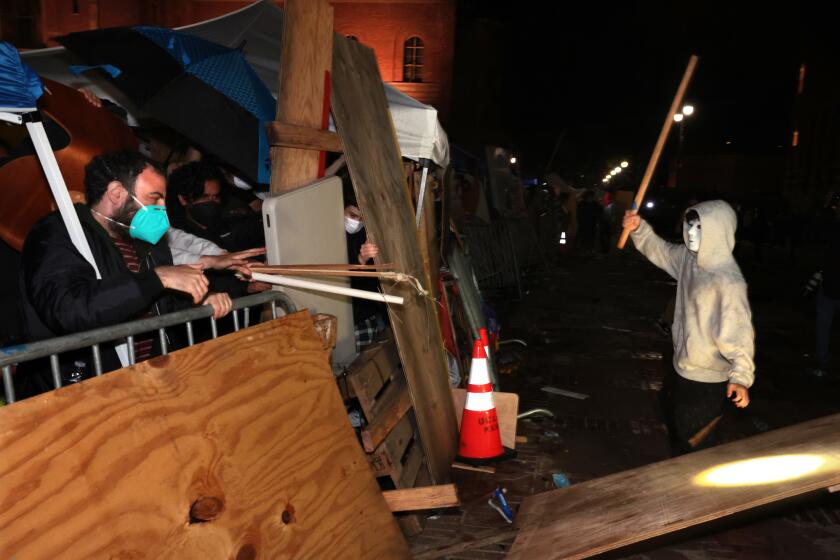CSUN Program Takes Lead in Addressing Issues Facing Blacks
From the darkness and doom created by statistics, commentary and media images profiling the African American community as one that has lost its anchor and vision, comes center stage the “Million Man March” proclaiming the indestructibility of the African American community’s spirit.
Although the black middle class is now the largest in the history of this country, the fact remains that more than 50% of African American children are living in poverty and 30% of African American men between ages 20 and 29 are entangled in the criminal justice system. Fingers are pointed at the middle class, accusing them of disengaging and deserting the black community. But the fact is, the philosophy of “lifting as we climb” and “giving back” is still alive.
Indeed, it is embodied in a new institute at Cal State Northridge that focuses on the complexities in the lives of African American students that might interfere with their achievement.
African Americans continue to understand well the lesson in the African proverb that “when spider webs unite, they can tie up the lion.” However, racism continues to force African Americans to roll the proverbial stone uphill. Until this country faces the reality of entrenched racism in key institutions, the collective work of the African American community will only keep the lion at bay.
As is historically the case in the African American community, its youth are considered the best barometer of its future. The dismal picture resulting from dire statistics documenting serious problems in education, employment, delinquency, incarceration, teenage pregnancy and drug abuse comes immediately to mind. It is not uncommon to hear black youth referred to as “an endangered species.” With a median population age of 24, when our youth are in trouble, the race is in trouble. The lion is circling. Media portray a monolithic image of African American youth, out of control and senselessly unleashing violent behavior, most often directed toward their cohorts but too often sending bullets crashing into the bodies of innocent citizens. Yet the real violence occurs before the guns even reach the hands of these youth. It occurs in the climate of despair that thrives when hopelessness reigns: too many children living in poverty; too many classrooms where hope is absent, and daily messages from society that it is fortifying the means by which it excludes people of color. African American youth should not be made to carry the burden of violence in America.
The San Fernando Valley community, becoming increasingly colorized, can no longer feel a sense of separation from issues that have traditionally been identified / dismissed as inner-city issues. The fate of the African American community is a fitting metaphor for the fate of America because the capacity of this country to include African Americans is representative of its capacity to include all people of color. If the world has become a global village, any given area of this country is but a block on which we no longer get to choose our neighbors.
When I came to the campus of CSUN in 1969, I thought it ironic that black and Chicano studies departments had been formed on a white campus in the heart of the “lily white” San Fernando Valley. The campus was forced onto a path of inclusion, and strong and enduring ethnic studies departments were born and continue to thrive today on a campus that is becoming increasingly diverse. Changing demographics are bringing people face to face with their fixed perceptions and assumptions about the “other.”
Insofar as the university can serve as a model of inclusion and excellence, it becomes an invaluable resource to this community. The recently chartered W.E.B. DuBois-Fannie Lou Hamer Institute for African-American Achievement is committed to establishing partnerships and collaborations with the larger Valley community to expand opportunities for excellence for African American students. It will complement the work of other campus entities with similar intent.
The institute’s recent conference on youth violence, participated in by the campus and off-campus community, provided an exciting forum for discussing the issues raised in this column. This institute, like the many efforts targeting the malaise caused by the racial divide, continues the effort to spin spider webs and find those of like purpose, so we can unite our webs and, finally, snare the lion.



